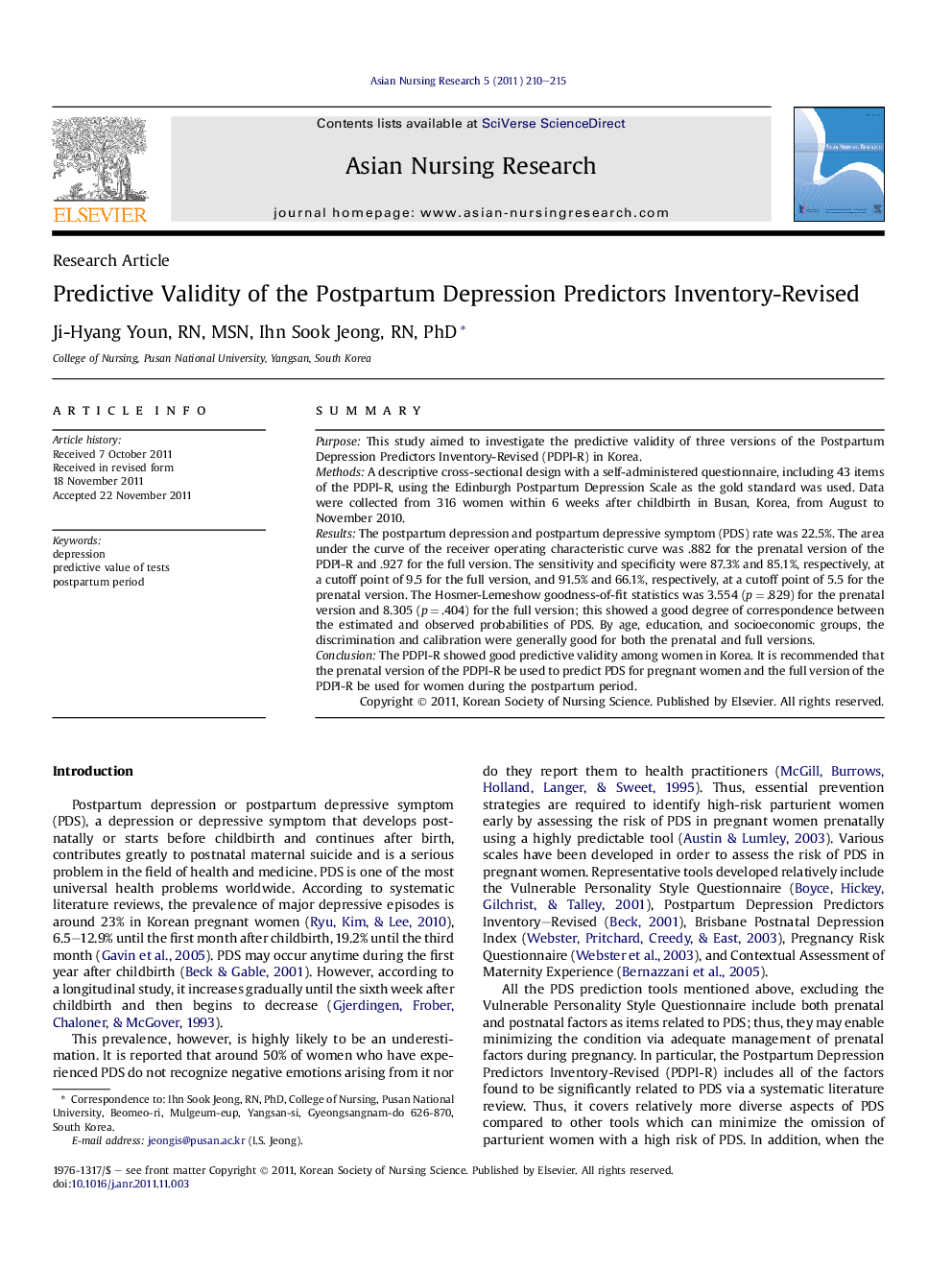| Article ID | Journal | Published Year | Pages | File Type |
|---|---|---|---|---|
| 2645349 | Asian Nursing Research | 2011 | 6 Pages |
SummaryPurposeThis study aimed to investigate the predictive validity of three versions of the Postpartum Depression Predictors Inventory-Revised (PDPI-R) in Korea.MethodsA descriptive cross-sectional design with a self-administered questionnaire, including 43 items of the PDPI-R, using the Edinburgh Postpartum Depression Scale as the gold standard was used. Data were collected from 316 women within 6 weeks after childbirth in Busan, Korea, from August to November 2010.ResultsThe postpartum depression and postpartum depressive symptom (PDS) rate was 22.5%. The area under the curve of the receiver operating characteristic curve was .882 for the prenatal version of the PDPI-R and .927 for the full version. The sensitivity and specificity were 87.3% and 85.1%, respectively, at a cutoff point of 9.5 for the full version, and 91.5% and 66.1%, respectively, at a cutoff point of 5.5 for the prenatal version. The Hosmer-Lemeshow goodness-of-fit statistics was 3.554 (p = .829) for the prenatal version and 8.305 (p = .404) for the full version; this showed a good degree of correspondence between the estimated and observed probabilities of PDS. By age, education, and socioeconomic groups, the discrimination and calibration were generally good for both the prenatal and full versions.ConclusionThe PDPI-R showed good predictive validity among women in Korea. It is recommended that the prenatal version of the PDPI-R be used to predict PDS for pregnant women and the full version of the PDPI-R be used for women during the postpartum period.
